+447709283333 | info@damavandpro.com

Clover Lawns
Tired of Mowing? Clover Lawns Might Be Your Answer
Forget spending all weekend pushing a mower! Clover lawns are becoming a popular trend for good reason: they only need about 4 mowings a year.
These little green patches are much tougher than your average grass. They can handle dry spells, hot weather, and require way less work. Plus, they’re good for the environment!
Many homeowners are interested in switching things up to avoid the problems that come with traditional lawns, especially with climate change. But before you dig up your yard, let’s see what the experts have to say about clover lawns.
Ever wonder about those lawns dotted with tiny white flowers?
Those are clover lawns, and they’re gaining popularity for a good reason!
A clover lawn can be all clover, or you can mix it in with your regular grass. The neat part? Clover is a nitrogen fixer, which means it pulls nitrogen from the air and puts it in the soil. This is great for the ground and any other plants you have around.
No need to get fancy with plant zones! Clover generally thrives in most climates similar to Europe and the UK.
-
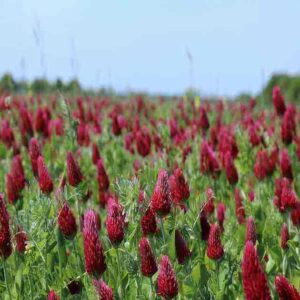

Crimson Red Clover Seeds
£7.00 – £29.00Buy Now This product has multiple variants. The options may be chosen on the product page -
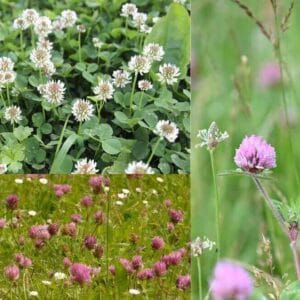

Mix White and Red Clover Seeds
£2.99 – £290.00Buy Now This product has multiple variants. The options may be chosen on the product page -
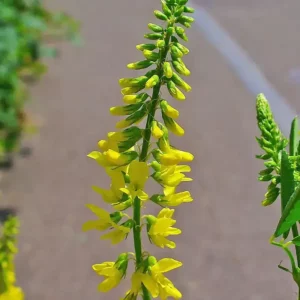
Sweet Clover Seed (Melilotus officinalis) 1kg Yellow Blossom
£20.00 -

White Clover Seeds: 1kg Grass Clover Oxalis
£25.00
The Simple Guide: Clover Lawn Pros and Cons
The Perks of a Clover Patch
There’s a good chance you already have some clover peeking through your grass! Instead of battling it, consider it a helping hand from nature. Mixing clover with your existing turf creates a more diverse lawn, attracting pollinators like bees and butterflies. Plus, when summer heat turns your grass brown, your clover will likely stay vibrantly green.
But the benefits go beyond aesthetics. Clover lawns are tough! They naturally resist diseases and pests, so you can ditch the harsh chemicals like fertilizers, herbicides, and pesticides. They even help prevent soil erosion and improve its overall health by adding nitrogen.
Trade-offs to Consider
While clover lawns offer many advantages, there are a few things to keep in mind:
- Traffic Trouble: Clover can struggle in high-traffic areas. Regular grass holds up better under constant foot traffic.
- Bee Aware: Clover flowers attract honeybees, which is great for pollinators but not ideal if someone in your household has a bee allergy.
Popular Clover Types for Your Garden
Consider these well-liked clover types for your outdoor space.
White Clover
This type is often found in parks or yards that avoid chemical treatments. It grows and spreads rapidly when planted in the spring. It can reach a height of 8 to 10 inches but can be kept shorter with regular mowing.
Small Clover
- Perfect for those who wish to move away from grass but still maintain a neat lawn.
- It is drought resistant and has a dense growth pattern.
- It matures to a height of 4 to 6 inches.
- It shares the same advantages as the white clover but in a smaller size and is more tolerant to low mowing.
Red Clover
This perennial herb is perfect to grow in combination with other clover types or turf grass. This low maintenance plant is hardy in EU and UK and can grow to a height of 12 to 18 inches.
How to Plant a Clover Lawn
Thinking of giving clover lawns a try? You can either encourage existing clover in your grass or establish a whole new clover haven! Here’s a simple guide to get you started:
Planting Time: Fall is ideal, but spring works too.
Step-by-Step:
- Prep the Patch: Clear your desired area, removing any existing grass (optional), weeds, rocks, and debris.
- Check the Soil: Make sure your soil’s pH is above 6.0. If it’s too acidic, add some lime to adjust it.
- Seed Sowing: Spread the clover seeds evenly following the recommended seeding rate on the package. You can adjust the amount based on how dense you want your clover lawn.
- Light Raking: Gently rake the seeds into the soil for good contact, but don’t bury them deep.
- Watering Wisdom: Water the area thoroughly and keep it moist until the seeds germinate. Once seedlings emerge, they’ll gradually take root, spread, and become thicker over time.
Combining Clover and Turf Grass
If you prefer not to have a lawn entirely made up of clover, consider blending it with your existing turf.
Choosing the Right Clover
Small clover is the ideal type to mix with existing turf grass. It can withstand regular mowing and provides a more consistent look.
Reseeding Your Lawn
- To combine clover with existing grass, reseed your lawn with clover seeds in the fall instead of grass seeds.
- This will enrich the soil with nitrogen and nourish the grass, eliminating the need for additional fertilizer.
Keeping Your Clover Lawn Happy
The good news is, established clover lawns are pretty low-maintenance! But here are some things to remember:
Sunshine: Clover prefers full sun to partial sun, but it can handle some shade too.
Watering: New clover needs frequent watering to get established. Once mature, water it once or twice a week during dry spells.
Soil: Clover adapts well to most soils, even compacted or poorly drained ones.
Mowing Magic: Sunny clover practically mows itself! You’ll likely only need to mow 3-4 times a year.
Mow How You Like: Want a lush green lawn? Mow more often, before blooms appear. Prefer a wildflower look? Let it grow up to 8 inches!
Is Clover Good In a Lawn?
Grass and clover are a good team. Clover adds nitrogen to the soil, helping the grass to be greener and healthier. Unlike grass that can turn yellow and die in extreme summer heat, clover remains green, making the yard look nicer.
Does clover get rid of grass?
Clover can be a polarizing plant. If you’re seeking a homogeneous lawn, it’s advisable to eradicate it as clover can vie with your grass for essentials like nutrients, sunlight, space, and water. Moreover, clover can lure pests that feed on it to your lawn.
What are the benefits of clover?
Clovers, part of the legume family, are packed with antioxidants. They have been employed in traditional medicine by several cultures to mitigate joint inflammation and as a cough suppressant.
What lawn feed kills clover?
A lawn feed amalgamated with a selective weedkiller can manage many common broad-leaved weeds in lawns. This Feed and Weed solution eradicates clovers, buttercups, dandelions, daisies, and plantains, resulting in a verdant and healthy lawn.
What is the best clover for poor soil?
Alsike Clover: This type of clover excels in low, poorly drained soil and can endure more alkalinity than most other clovers. Alsike Clover can resist flooding for extended durations, but extended droughts may exterminate it. It’s an exceptionally winter-hardy perennial clover.
Will clover take over a lawn?
Much like dandelions, clover can swiftly dominate a lawn if not controlled. The patchy look that clover imparts to a lawn can often irritate homeowners because it has a different texture, color, and growth rate compared to turfgrasses.
-
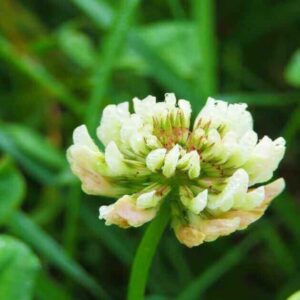
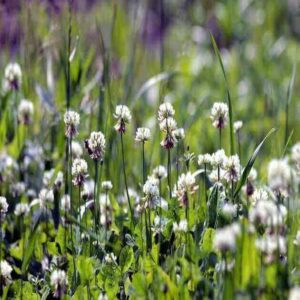
1kg White Clover Grass Lawn Seed: Low Maintenance, Natural Lawns
£29.99 -
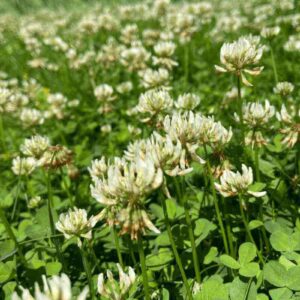

Mix White & Red Clover Seeds: Gorgeous, Useful, Low-Maintenance Ground Cover for 200 Square Meter Landscape
£35.00 -


Persian Clover Seed (Trifolium resupinatum) 1kg
£20.00 -
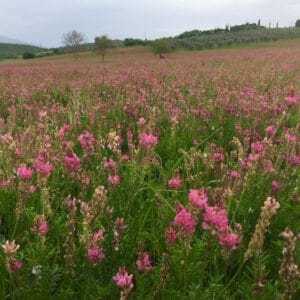
Sainfoin Seeds – Premium Quality Onobrychis Vicifolia Seeds for High-Yielding Forage
£20.00
